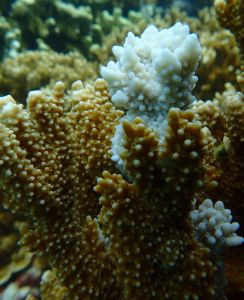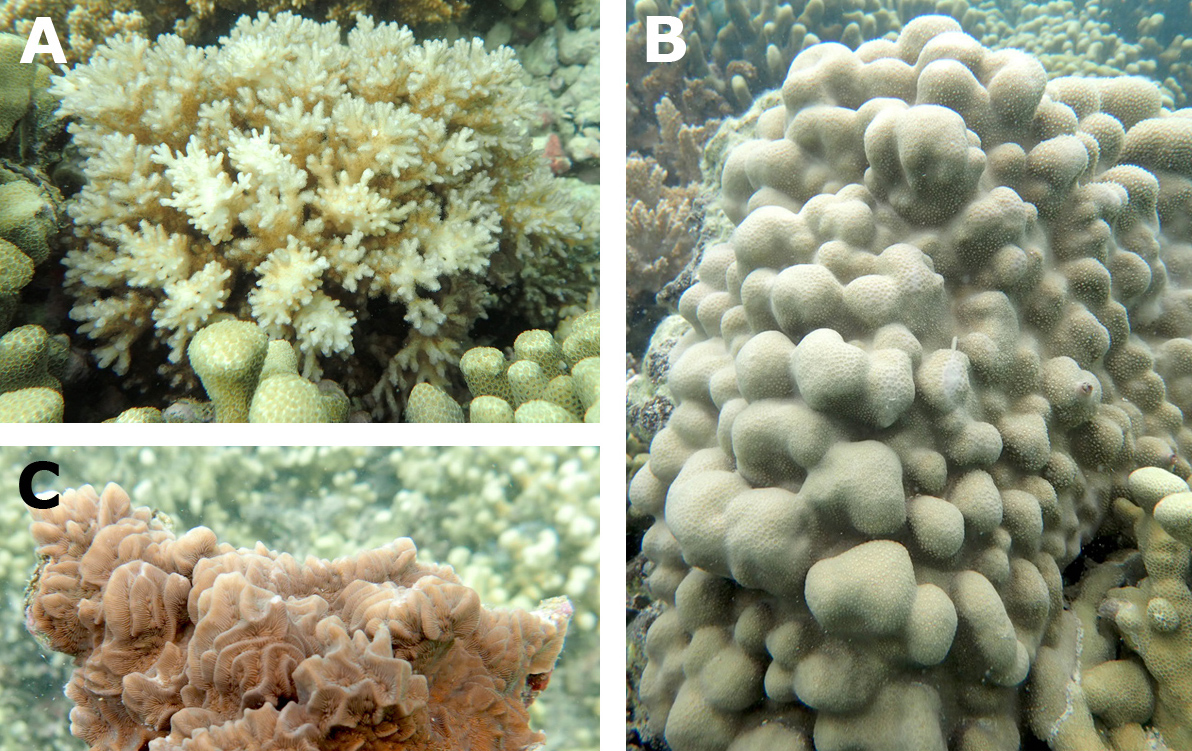Mitigating climate change impacts: What drives thermal resiliency in Hawai‘i’s coral reefs?
Background
The value of coral reefs extends beyond their beauty. Those living in Hawai‘i have all benefited directly from coral reefs, whether it is directly through tourism business or personal enjoyment of snorkeling, beach-going, or even enjoying a poké bowl. Coral reefs are the bedrock of our marine ecosystems, providing critical economic, coastal, cultural, and ecological services to the entire island community.

The structures of coral reefs, which come in many shapes and sizes, are formed from colonies of corals themselves. The individual colonies are made up of hundreds to thousands of individual animals, called polyps, but together they form these robust structures that actively protect and enhance our shorelines. Reefs slow down waves, limiting coastal erosion, and they act as nurseries for countless species of fish. Coral reefs also boost local tourism and economies with their beauty. However, strong as these structures may be, corals are not immune to the stressors of a shifting climate.
Corals get their beautiful colors from hundreds of thousands of tiny algae that live within their tissues. But the algae are not just esthetically pleasing: they are critical to coral survival. Similar to plants, the algae turn sunlight into energy that the coral uses to live. However, when water temperatures rise too high for optimal coral function, there is a breakdown in this symbiotic partnership, and the algae are expelled from the coral. As a result, the coral appears pale or white, a process known as coral bleaching. If conditions return to normal, there is a chance for the coral-algae partnership to reform; however, if stressful conditions persist, the algae are not reincorporated, and the coral can die. If large swaths of corals die all at once, it can lead to entire ecosystem collapse. Over the past few years as ocean temperatures have risen, these devastating bleaching events have become more frequent and more widespread, globally. Hawai‘i coral reefs have experienced two major bleaching events in 2014 and 2015.
Project Summary
However, not all corals respond to stress in the same way. Observations have established that during a single coral bleaching event, different coral species on the same coral reef may respond to thermal stress differently. For example, one species may become extremely bleached while another does not visibly pale at all. We are interested in identifying which traits make some coral species less likely to bleach than others. By identifying these traits, we may be able to predict how reef ecosystems will respond to thermal stress and better manage these important resources.
Our project aims to identify the biological characteristics that drive thermal tolerance in corals, using several common coral species in Hawai‘i, including finger coral, rice coral, corrugated coral, lace coral, and lobe coral. These species differ in the types of algae that they associate with, how they acquire their algae (from their parents or from the environment), and the thickness of their tissue. By exposing small nubbins (coral fragments less than 5 cm) to either ambient or high temperature, followed by a recovery period (all nubbins at ambient), we will be able to monitor the progression of coral bleaching as well as subsequent coral recovery and how recovery may relate to these species-specific factors. Understanding what traits contribute to thermal tolerance will allow us to predict how corals will respond to increasing stress and to help them survive into the future.

PROJECT DETAILS
FUNDED:
FY2016
PI:
Ruth Gates
Director of Hawai‘i Institute of Marine Biology, UH Mānoa
Graduate Scholar:
Shayle Matsuda
Department of Marine Biology, UH Mānoa

